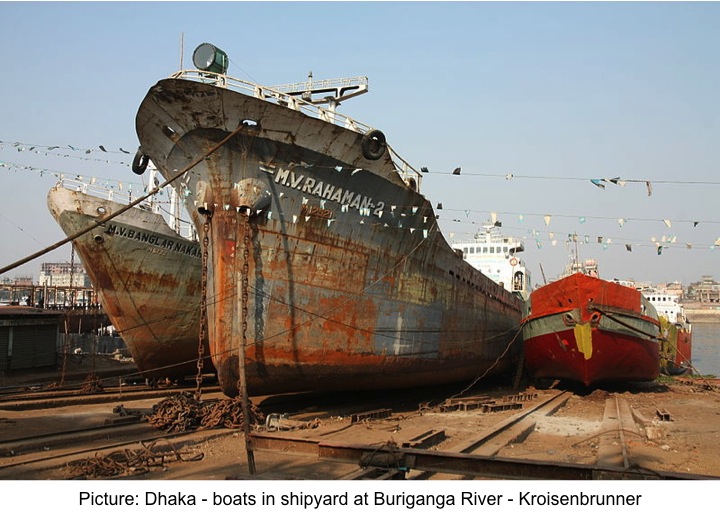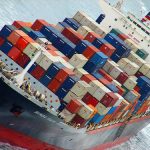China Shipbuilding Struggles
 For a long time, China has been the world’s leading shipbuilder. But as Bob Dylan would say, “The times, they are a changin’.” Shipbuilding in China is now struggling to stay alive.
For a long time, China has been the world’s leading shipbuilder. But as Bob Dylan would say, “The times, they are a changin’.” Shipbuilding in China is now struggling to stay alive.
Looking Bleak
A China Daily article published on EIN News highlights just how bad things are looking for the shipbuilding industry in China this winter:
“A lot of shipbuilders may not make it through the winter,” said Lin Ruijin, secretary-general of the Fu’an Shipbuilding Industry Association in Fujian province.
Shipbuilders going under can already be seen in China. The article highlighted the giant state-owned shipbuilding company, Wuzhou Shipbuilding Co. Ltd. that produced 12 percent of China’s ships in 2014 only to go bankrupt by November of 2015.
The article also shares struggles of shipbuilding companies trying to keep going:
“We are getting very few orders these days,” said Zhang Qingjie, general manager of Huahai Shipbuilding Co Ltd, a leading shipbuilder in Saiqi township. In its heyday, Zhang’s company boasted more than 1,000 employees, with 22 ships being built simultaneously on the bustling banks. “Now only around 20 people work in our company,” Zhang said.
China’s Shipbuilding Slump
Bloomberg reports that new orders received by Chinese shipbuilders fell by almost half in 2015 from 2014.
While Hellenic Shipping News reports that China remained the world’s biggest shipbuilding nation in 2015, shipbuilding orders did indeed drop. Hellenic’s numbers for overall drop in new building orders is not as dramatic as losing half of new orders when comparing 2015 to 2014; however, 2015 compared to 2013 shows more than a 50% drop:
China retained its crown as the world’s biggest shipbuilding nation in 2015, but with a 26% decline on year in newbuilding orders, chiefly due to “the abysmal state of the dry bulk market,” Italian shipbroker Banchero Costa (Bancosta) said Tuesday.
Looking at mainstream deep sea vessels, encompassing bulk carriers of over 20,000 dwt, crude and product tankers of over 30,000 dwt and container ships over 500 TEU, Chinese shipyards received orders for 389 new units in 2015, down 26% from 2014 and a 52% drop from 2013, Bancosta said in a report.
This decline in newbuilding orders was especially felt in the dry bulk sector, the “bread and butter” of Chinese shipbuilding, with China’s yards receiving orders for just 102 dry bulk vessels, down 72.9% from 377 in 2014 and down 83.5% from 620 in 2013, according to Bancosta data.
Worse Outlook for 2016
If years of decline continue to stack upon each other, China can forget about maintaining its title of world’s biggest shipbuilder; it will have to focus on just keeping the shipbuilding sector afloat.
Certainly, things like Maersk saying the international shipping industry could be in for a decade-long recession is not something China wants to hear when many shipbuilders in China seem to need a strong 2016 just to survive.
Unfortunately, projections for 2016 are not strong.
Lee Hong Liang writes in an article for Seatrade that China shipbuilding is in for an even tougher year in 2016:
China’s ailing shipbuilding sector is expected to face a tougher year in 2016 due mainly to the continuing supply-demand imbalance in global shipping and newbuilding prices likely to decline further, according to China Association of the National Shipbuilding Industry (Cansi)
…
“In view of the rapid growth in tonnage capacity in tanker shipping following low oil prices, the oil tanker market may slow down (in 2016). Dry bulk shipping remains in a depressed state, and container shipping may see a significant slowdown,” Cansi commented.
Hope for China’s Shipbuilding
If there is hope for China’s shipbuilding, it is in moving toward new technology.
Changes in the international shipping industry, including a call for ships with reduced or eliminated CO2 emissions that are also bigger and more efficient, creates a demand for new technological advances in shipbuilding.
Of course, China’s government is not going to simply let its shipbuilding sector die. It is pushing the country’s shipbuilding industry in that direction.
The China Daily article quoted above also reports:
The government is encouraging shipbuilders to go into the high-end sector, with a national guideline on the country’s manufacturing in May emphasizing better investment in research and development in shipbuilding and marine engineering equipment.
A guideline drafted by the China Association of National Shipbuilding Industry was also recently completed. The guideline maps out plans for the industry to increase high-tech shipbuilding by 2020.
At the same time, the government is stepping in with things like the finance agreement between the China Shipbuilding Industry Corporation (CSIC) and the Export-Import Bank of China reported by Jon Grevatt on Janes.com:
Under the agreement – an extension of existing ties – the bank will provide CSIC with financial support and assistance in exploring new opportunities for investment, international co-operation, and CSIC programmes to construct high-technology products, said CSIC on 27 January.
![]()
Source: UC Blog




